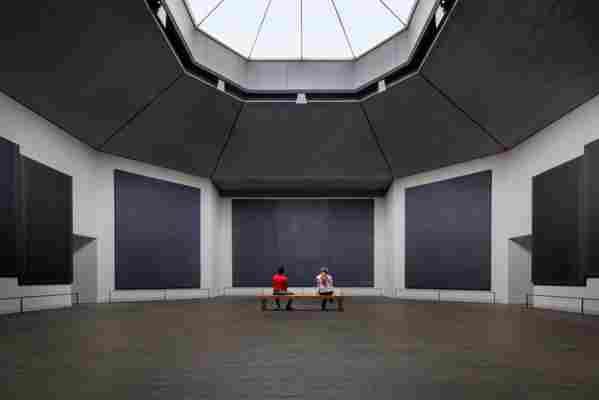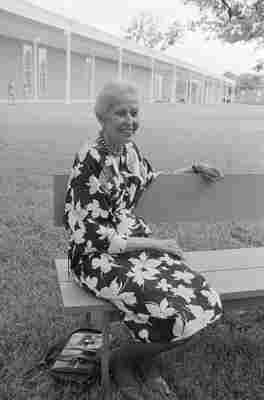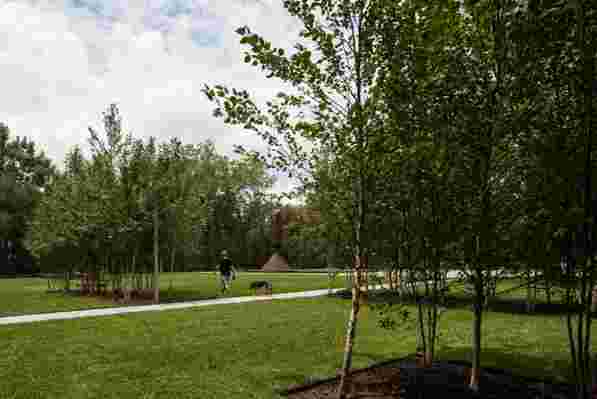The Ambitious Restoration of Houston’s Rothko Chapel Is Now Complete
In 1971, the philanthropist Dominique de Menil addressed a reception in Houston. Her words were in regards to the newly completed Rothko Chapel, which she and her husband, John, had commissioned, by quoting the artist whose paintings were arrayed around her. “A picture lives by companionship, expanding and quickening in the eyes of the sensitive observer,” she said at the time. “It dies by the same token.”
But companionship with Mark Rothko’s 14 paintings has long been a tricky business in that sui generis octagonal structure, which was designed by the artist with architect Philip Johnson and then (when Johnson quit) Howard Barnstone and Eugene Aubry.

At the center of the chapel's restoration is this newly completed skylight.
While Rothko conceived of a skylight for the space, he died, by suicide, in 1970, without visiting the city. As such, that feature was partially occluded to protect his works from the tough Texas sun. The resulting space often felt shadowy and brooding, his tough paintings—in nuanced shades of deep purple, gray, and black—difficult to see. The experience could still be transfixing, but a sadness lingered: This was likely not what Rothko had in mind.
Now a restoration project spearheaded by the New York–based Architecture Research Office (ARO) aims to realize Rothko’s intent for the nondenominational chapel, which reopens, on September 24, following construction, with timed tickets for pandemic-era safety.
ARO and lighting experts George Sexton Associates have installed a new skylight—informed by the one that captured the artist’s imagination at the carriage house on Manhattan’s Upper East Side, where he worked on the paintings (uptown from his earlier, fabled Bowery studio )—that uses louvers and laminated glass to convey light while protecting the artworks.
“You no longer have that super-heavy baffle,” observes ARO cofounder Adam Yarinsky, who says that it “competed with the Rothko Chapel—that sort of darkness.”

A picture of Dominique de Menil.
“It looked like a lead weight,” fellow cofounder Stephen Cassell concurs. Their goal, he says, was to underscore Rothko’s idea of “a powerful individual experience that is the marriage between” architecture and art. “A lot of what we were doing was removing obstacles to that.”
The skylight is one poignant part of an ambitious $30 million plan by ARO to expand the chapel’s campus. Also new is a modestly sized welcome center that sits across the street, behind the sacred space, tucked into the tranquil neighborhood of bungalows that are almost uniformly painted in what’s known as “De Menil gray,” according to Cassell. (The Renzo Piano–designed Menil Collection , where the De Menils deposited their storied art holdings, is a block from the chapel; the two institutions own many of those surrounding houses.)

The verdant grounds surrounding the Rothko Chapel.
“Our responsibility was to not overwhelm the exceptional character of the chapel building, and to maintain its relationship with the residential context,” Yarinsky says, discussing the careful scale and the massing of their additions. Those include a finished building for the chapel’s mechanics, making it much quieter inside, and one for programming that will go up in a future construction phase, for which fundraising is under way. Meanwhile, the landscape architects Nelson Byrd Woltz have been working with ARO to develop the parkland around the chapel, adding tree groves and “areas to sit and decompress” from a visit, Cassell says.
Yarinsky points out that the dynamics between the chapel and its reflecting pool, with Barnett Newman’s Broken Obelisk (1963–67) sculpture, dedicated to Martin Luther King Jr., at its center, “embody the mission of the chapel of contemplation and action.” For the De Menils, who were devout Catholics, art had a profound ethical dimension, and so a newly illuminated Rothko Chapel carries special meaning. Describing Rothko’s paintings under the fresh lighting conditions, Cassell says, “There are subtleties to the brushstroke, to the color, to the reflectivity of the paint, that you really didn’t see in the inadequate light. I think the paintings will have more subtle depth to them and more to discover over time. Which, you know, is the reason you're there.”